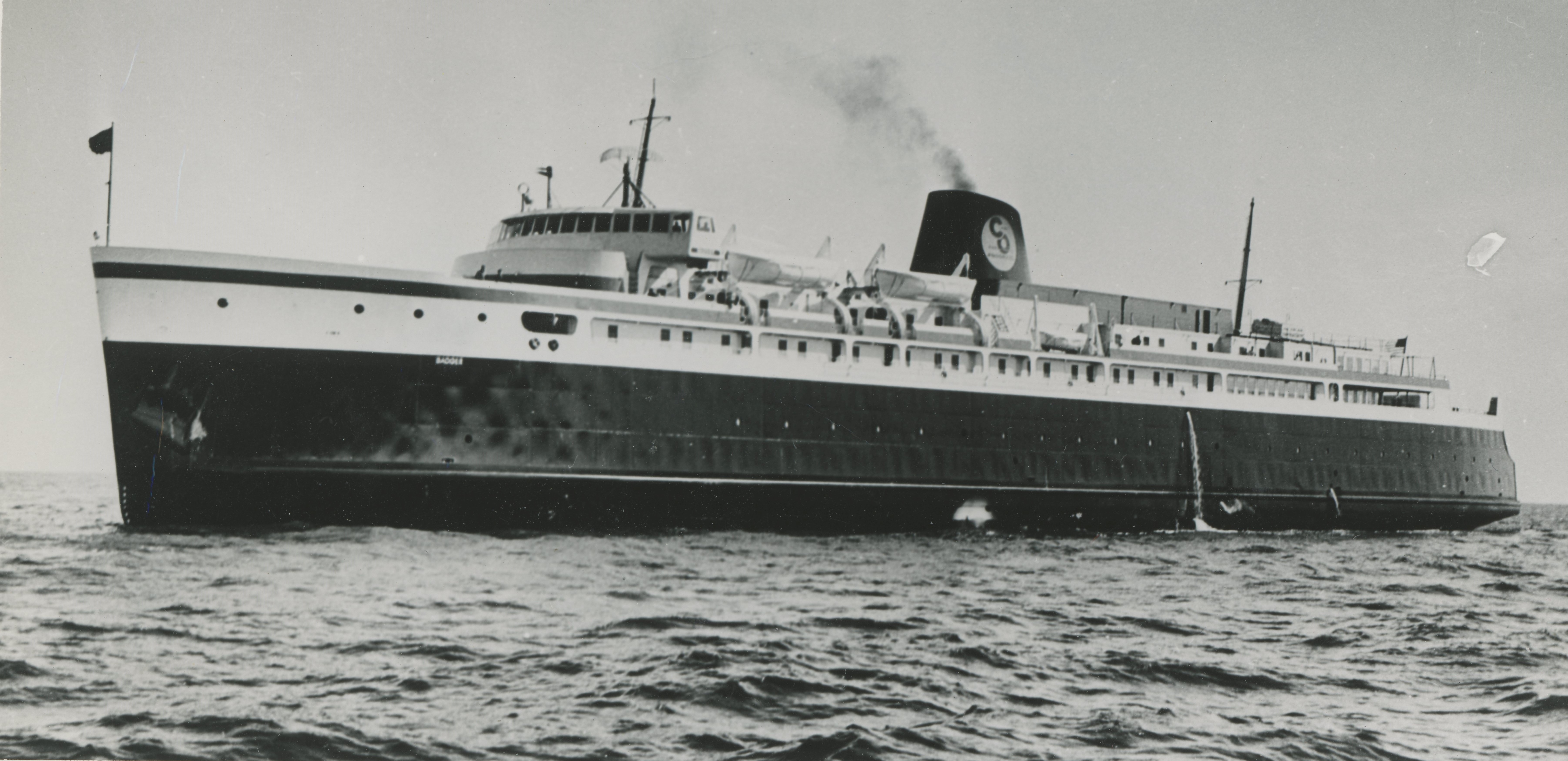


Great Lakes Now - August 14, 2019
Prominent in Michigan’s port of Ludington harbor sits the SS Badger — the last of Lake Michigan’s car ferries and the last coal-fired passenger steamship in the United States.
The 410-foot ship weighing 6,650 tons was built in 1953 and designated a National Historic Landmark by the U.S. Department of the Interior in 2016.
The ship provides a 4-hour-long transport across Lake Michigan from Ludington, Michigan, to Manitowoc, Wisconsin.

The SS Badger At Manitowoc Wisconsin With Oversize Cargo, Photo by Joe Haupt via flickr.com cc 2.0
“The Badger is the last of the Ludington car ferries,” said Eric Harmsen, site manager of the Port of Ludington Maritime Museum, “which was this huge industry here in Ludington and a large part of Ludington’s maritime history and heritage, and Lake Michigan maritime history.”
Harmsen said during the 1920s, early 1930s, Ludington hosted the largest car ferry fleet in the world.
“The Badger is the last of that legacy. It’s a connection to Ludington’s maritime past,” he added.
Two years after the 1873 incorporation of the city of Ludington, the Pere Marquette Railroad arrived and added cross-lake steamer service between Ludington and Sheboygan, Wisconsin, using small wooden-hulled ships known as “breakbulk” freighters. The vessels transported cargo across the lake to Wisconsin, where dockworkers unloaded the cargo onto trains.
“Pretty quickly they realized that that was a very time-consuming, labor-intensive process, and by the late 1800s, they were experiencing quite a few delays,” Harmsen said.

Pere Marquette, the first of the Ludington carferries, Photo by Mason County Historical Society
A Captain James Martin in Ludington, who worked for the railroad, saw that elsewhere in the country and around the world there were boats called car ferries designed to carry loaded train cars, according to Harmsen. Those boats were open-ended barges that train cars were put onto, crossing rivers and shallow bodies of water.
Harmsen said a wooden car ferry in Frankfort, operated by the Ann Arbor Railroad, had a major impact on Martin’s vision for Ludington’s transport service.
“Captain Martin saw that boat and some of the other car ferries around the country and thought that that design could be improved on,” said Harmsen. “So he got together with a naval architect named Robert Logan and together they created the design for the first steel open-water car ferry on the Great Lakes.”
In 1897, the steel-hulled Pere Marquette entered service, which was equipped with four sets of railroad tracks on deck to transport loaded rail cars. By mid-1900, the Pere Marquette Railway Company entered 10 additional ferry ships.
The SS Badger and its twin, the SS Spartan, were built in 1953. The Spartan rests in Port Ludington, while the Badger remains in service.
“At that time they were still carrying train cars for the railroad,” Harmsen said. “That was the Chesapeake and Ohio Railroad… By that time, they were already carrying passengers and automobiles as well as the train cars.”
The use of railcar transfer across Lake Michigan, beginning in the1890s and continuing into the 1980s, was commerce driven. Today the S.S. Badger continues to support commercial transport while also providing tourist transport service. A trailer-transfer program enables companies to load semi-trailers in one port and have them unloaded at port across Lake Michigan.

Unloading A Wind Turbine Base From The SS Badger Ferry Ship At Manitowoc Wisconsin, Photo by Joe Haupt via flickr.com cc 2.0
“Although we’re predominantly leisure-passenger driven, on any given sailing you can see everything from standard semi-trucks, over-dimensional loads, large farm implements, etc.,” said S.S. Badger Customer Service and Public Relations Manager John Merchant.
When the railroad ended ferry service in the mid-80s, the Ludington-based Michigan Wisconsin Transportation Company continued operating car ferries for industrial and commercial transport. In 1990, ferry service ended, negatively impacting the community’s economy.
In 1992, Ludington resident Charles Conrad invested in putting the ferries back into service as Lake Michigan Carferry.
“I think it was at this time Ludington started to transition to more tourism,” Harmsen said. The Port of Ludington Maritime Museum has a recreation of the captain’s cabin of the 1920s-era Pere Marquette 22 visitors can explore as well as a car ferry pilot simulator.

Carferries in the ice on Lake Michigan in 1920, Photo by Mason County Historical Society
In 2012, the company faced complaints by environmentalists that the SS Badger discharged more than 500 tons of coal ash into Lake Michigan each season. In a 2013 compliance agreement with the U.S. Environmental Protection Agency, the company spent more than $2.4 million on controls and equipment to collect coal ash from the ship’s boilers, according to a 2015 Detroit Free Press article.
In 2015, EPA regulators announced the ship was in compliance.
Each year, the SS Badger is at work from early May through the end of October. The ship rests in its home port of Ludington over the winter.
“During our sailing season, we arrive in Manitowoc, stay in port for two hours and return to Ludington,” Merchant explained. “The cycle is very similar in Michigan. During our “single” sailing season, the Badger stays in Ludington overnight after returning from the 2 p.m. departure in Manitowoc. In ‘doubles,’ we sail back and forth across Lake Michigan 24 hours a day.”
The ship’s “single” season falls from early May to mid-June and early September to mid-October. The “double” season is mid-June to the end of August.
For schedule and fare information, visit www.ssbadger.com
Featured Image: S.S. Badger being launched at Sturgeon Bay, Wisconsin in 1952, Photo by Mason County Historical Society